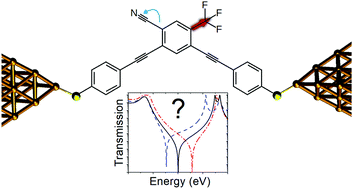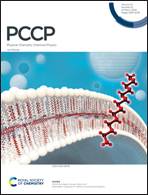Taming quantum interference in single molecule junctions: induction and resonance are key
Abstract
We have joined two fundamental concepts of organic chemistry to provide a deep, yet intuitive, understanding of how side groups influence destructive quantum interference (DQI) in the transport through conjugated molecules. Using density functional theory combined with Green's function techniques, and employing tight-binding models in which all the π-systems are considered, we elucidate the separate roles of bond-resonance and induction in tuning DQI. We show that the position of the anti-resonances produced by DQI is sensitive to the number of side groups, but not in a simple additive way. Instead, addition of multiple groups results in a weaker overall contribution per group, and this can be understood using a straight forward graphical analysis. Furthermore, we show that additional fine tuning of DQI is possible via attachment of a chain of atoms to a second site around the ring. DQI is controlled by modifying the length of the chain, thus providing exquisite control over the anti-resonance position. This insight provides chemists with a large number of options to tune DQI for unprecedented device optimization.



 Please wait while we load your content...
Please wait while we load your content...